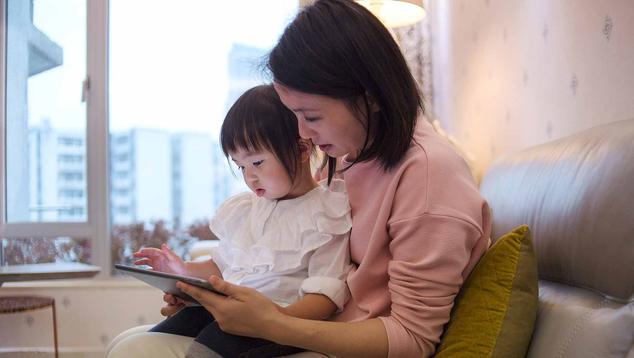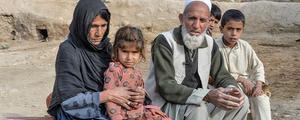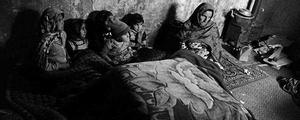Story Highlights
- 24% of the most-vulnerable adults worldwide had internet access in 2019
- Digital divides exist in developed and developing economies
- Households with most children were the least connected
WASHINGTON, D.C. -- Although the internet is keeping many people connected to work, school and each other during the COVID-19 pandemic, Gallup analysis shows that more than half a billion of the world's most-vulnerable people -- who were struggling to meet even their basic food and shelter needs and didn't have anyone to help them -- didn't have internet access either when the pandemic hit.
Results based on Gallup's new Basic Needs Vulnerability Index reveal a glaring digital divide between the highly vulnerable and the least vulnerable. Fewer than one in four people worldwide (24%) in the High Vulnerability group said they had access to the internet through a computer, mobile phone or another type of device, compared with nearly three in four adults (74%) in the Low Vulnerability group.
| World | Developing economies | Developed economies | |||||||||||||||||||||||||||||||||||||||||||||||||||||||||||||||||||||||||||||||||||||||||||||||||
|---|---|---|---|---|---|---|---|---|---|---|---|---|---|---|---|---|---|---|---|---|---|---|---|---|---|---|---|---|---|---|---|---|---|---|---|---|---|---|---|---|---|---|---|---|---|---|---|---|---|---|---|---|---|---|---|---|---|---|---|---|---|---|---|---|---|---|---|---|---|---|---|---|---|---|---|---|---|---|---|---|---|---|---|---|---|---|---|---|---|---|---|---|---|---|---|---|---|---|---|
| % Access | % Access | % Access | |||||||||||||||||||||||||||||||||||||||||||||||||||||||||||||||||||||||||||||||||||||||||||||||||
| High vulnerability | 24 | 21 | 77 | ||||||||||||||||||||||||||||||||||||||||||||||||||||||||||||||||||||||||||||||||||||||||||||||||
| Moderate vulnerability | 46 | 42 | 84 | ||||||||||||||||||||||||||||||||||||||||||||||||||||||||||||||||||||||||||||||||||||||||||||||||
| Low vulnerability | 74 | 68 | 91 | ||||||||||||||||||||||||||||||||||||||||||||||||||||||||||||||||||||||||||||||||||||||||||||||||
| Gallup World Poll, 2019 | |||||||||||||||||||||||||||||||||||||||||||||||||||||||||||||||||||||||||||||||||||||||||||||||||||
Basic Needs Vulnerability Index
Gallup's Basic Needs Vulnerability Index gauges people's potential exposure to risk from economic and other types of shocks like a pandemic. Beyond measuring people's ability to afford food and shelter, this index also folds in whether people have personal safety nets -- people who can help them when they are in trouble.
People worldwide fall into one of three groups:
High Vulnerability: People in this group say there were times in the past year when they were unable to afford food or shelter or say they struggled to afford both and say they do not have family or friends who could help them in times of trouble.
Moderate Vulnerability: People in this group say there were times in the past year when they were unable to afford food or shelter or say they struggled to afford both, and they do have family or friends to help them in times of trouble.
Low Vulnerability: People in this group say there were not times in the past year when they struggled to afford food or shelter and say they do have family or friends to help them if they were in trouble.
Internet Access at New High Before Pandemic, but Not Equal
Heading into the pandemic, internet access worldwide had reached a new high of 56% in 2019, but access remained highly uneven between the digital haves and have-nots. In developed economies, 88% of people said they had access to the internet through some device, compared with 49% in developing economies.
However, the Basic Needs Vulnerability Index suggests the digital divide is not solely a development issue. In every region of the world, in developed and developing economies alike, those in the High Vulnerability group were the least likely to have access to the internet.
In developing economies, 21% in the High Vulnerability group had access, compared with 68% in the Low Vulnerability group. The divide was smaller in developed economies, but it was still present: 77% of the highly vulnerable had internet access versus 91% of the least vulnerable. It's important to point out, however, that internet access was still lower among the least vulnerable in developing economies (68%) than among the most vulnerable in developed economies (77%).
Highly Vulnerable With the Most Children at Home Are the Least Connected
While many parents around the world have had the option for their children to take classes online during the pandemic, this was available only for those with internet access. Globally, a slim majority (51%) of adults with children younger than 15 in the household reported having access to the internet, compared with 62% of those with no young children at home.
The highly vulnerable were at an even larger disadvantage. Among this group, the lack of internet connection increases as the number of young children present in the home rises. At the global level, 29% of the highly vulnerable who have no children younger than 15 said they had internet access. Access drops steadily with each additional child present in the home, but it is lowest at 16% among those with three or more young children.
| World | Developing economies | Developed economies | ||||||||||||||||||||||||||||||||||||||||||||||||||||||||||||||||||||||||||||||||||||||||||||||||||
|---|---|---|---|---|---|---|---|---|---|---|---|---|---|---|---|---|---|---|---|---|---|---|---|---|---|---|---|---|---|---|---|---|---|---|---|---|---|---|---|---|---|---|---|---|---|---|---|---|---|---|---|---|---|---|---|---|---|---|---|---|---|---|---|---|---|---|---|---|---|---|---|---|---|---|---|---|---|---|---|---|---|---|---|---|---|---|---|---|---|---|---|---|---|---|---|---|---|---|---|---|
| % Access | % Access | % Access | ||||||||||||||||||||||||||||||||||||||||||||||||||||||||||||||||||||||||||||||||||||||||||||||||||
| Number of children younger than 15 | ||||||||||||||||||||||||||||||||||||||||||||||||||||||||||||||||||||||||||||||||||||||||||||||||||||
| 0 | 29 | 25 | 70 | |||||||||||||||||||||||||||||||||||||||||||||||||||||||||||||||||||||||||||||||||||||||||||||||||
| 1 | 26 | 23 | 96 | |||||||||||||||||||||||||||||||||||||||||||||||||||||||||||||||||||||||||||||||||||||||||||||||||
| 2 | 25 | 23 | 92 | |||||||||||||||||||||||||||||||||||||||||||||||||||||||||||||||||||||||||||||||||||||||||||||||||
| 3+ | 16 | 15 | 89 | |||||||||||||||||||||||||||||||||||||||||||||||||||||||||||||||||||||||||||||||||||||||||||||||||
| Gallup World Poll, 2019 | ||||||||||||||||||||||||||||||||||||||||||||||||||||||||||||||||||||||||||||||||||||||||||||||||||||
This effect is largely muted in developed economies, with internet access dropping off only marginally among those with three or more children in the home. In these economies, those with no children in the home were actually the least likely to have internet access, but this may reflect that these respondents were older. In developing economies, access to the internet drops from 25% among the highly vulnerable with no children younger than 15 in the home to 15% among those with three or more children.
Implications
The pandemic has sparked major changes in the technology industry, and the disruptions to education and the workplace will likely change the way people work and learn for generations. But clearly, hundreds of millions around the world -- if not more -- were not benefiting from these changes and will be at an even greater disadvantage on the other side of the pandemic.
If any good has come from it, the pandemic has exposed inequalities as more than a development issue and may be a wake-up call for governments and organizations to invest in technology -- particularly where they assumed it already existed.
Ying Han contributed to this article.
For complete methodology and specific survey dates, please review Gallup's Country Data Set details.
Learn more about how the Gallup World Poll works.




